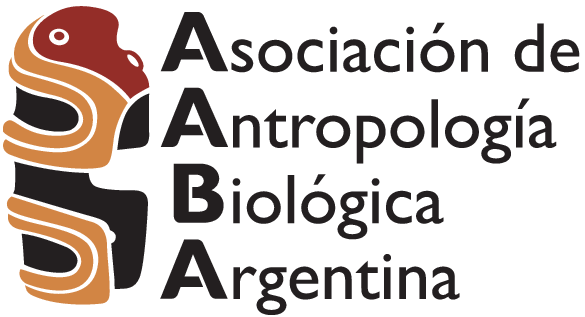Submissions
Submission Preparation Checklist
As part of the submission process, authors are required to check off their submission's compliance with all of the following items, and submissions may be returned to authors that do not adhere to these guidelines.- Check the focus and scope of the journal to assess whether the manuscript is suitable for consideration for publication in the RAAB (About the Journal).
- Read the RAAB section policies to select the one that best suits the type of manuscript that will be submitted (Section Policies).
- The manuscript has not been published nor has it been previously submitted to another journal, either in the same or in another language.
- The file sent is in Microsoft Word, RTF, or WordPerfect format.
- We confirm that all observation, handling, and experimentation procedures involving animals are in accordance with local policy and international ethical recommendations.
- The text meets the bibliographic and style requirements indicated in the journal guidelines for authors.
- None of the authors has a commitment to funding sources or institutions that influence the information presented, and that could be understood as a conflict of interest.
- The Declaration of Helsinki of the World Medical Association (Finland, 1964) and its successive amendments of 1975, 1983, 1989, 1996, and 2000 have been followed when conducting the work.
- The procedures developed with the study of human remains are in accordance with local laws and international ethical recommendations.
- The doi and web addresses for bibliographic references have been added where possible.
- If some local communities or families claim to have some link with burial sites or with the biological and cultural remains studied, a statement that they have given consent for their study should be included.
- The observation, handling, and/or experimentation procedures developed with animals are in accordance with local laws and international ethical recommendations.
Original Articles
This type of work deals with specific topics in the discipline and provides results that have not been previously published, whose conclusions represent a significant advance in the understanding of a problem within the field of interest of the journal. The standard organization of original works should include the following sections: Summary, Introduction, Materials and Methods, Results, Discussion, Acknowledgments, Literature cited. Subheadings will be used within sections to clarify the organization of information when necessary. Figures and tables will be limited to those necessary to understand the results and conclusions of the manuscript. Additional text file, tables and figures will be included in the Supplementary Material. The main text, including the list of references (excluding the abstract and the information on the first page), must be at least 6,000 words and must not exceed 12,000 words.
Brief Communications
This is a scientific communication with the same format as the original works, but of reduced length that reports the results of a research work. The manuscript should not exceed 5000 words (excluding the abstract and cited literature) and follows the same style of presentation and structure as the original works, although the complete division into sections can be dispensed with.
Review Articles
These works develop syntheses on topics of interest in the discipline, also presenting a critical perspective of the author on said topic. These works do not have a predefined structure, but must include Summary, Acknowledgments and Literature Cited. Headings and subheadings should be used to clarify the structure of the article. The main text, including the list of references (excluding the abstract and the information on the first page), must be at least 6,000 words and must not exceed 12,000 words.
Technical Notes
This manuscript results from projects that produced valuable information regarding specific methodological topics of the specialty. It may involve the presentation of new methods, as well as presenting comparisons between different methods, clarifications, modifications or any comments on methodologies that are in use in the biological anthropology community. The structure for these manuscripts must include at least the sections: Summary, Acknowledgments and Literature Cited, in addition to the main body of the manuscript. Headings and subheadings should be used to clarify the structure of the article. The manuscript must not exceed 6,000 words, including the list of references (excluding the abstract and the information on the first page).
Dossiers
This section is intended for content reviews that address a special topic and reflect current and emerging trends in the field. Its function is to bring together at least five works, proposed by responsible editors, members of the editorial committee or guest editors. The manuscripts included in the dossier may have the format of an original work, review article, brief communication, technical note, whose requirements for preparing the manuscript, sending it, reviewing it and the subsequent evaluation process are equivalent to those followed by the rest of the contributions received by the magazine. Dossiers can combine manuscripts of different formats, but at least one of them must belong to the original article or short communication category. In a first evaluation by the responsible editors, it will be verified that the dossier proposal fits the thematic profile and scope of the RAAB. In a second instance, when the articles are received, the editorial team, including the guest editors, will evaluate whether each of them conforms to the journal's standards and the thematic area of the dossier. In a third instance, the manuscripts will be evaluated by external peers like the other contributions. Dossiers must include an introduction of 1000 to 2000 words, which will be authored by the dossier's coordinators. The coordinators of a dossier must write an email to the magazine containing a document containing the proposed subject of the dossier, relevant to biological anthropology, a list of invited articles including the title of the jobs, the type of job in accordance with the section policies of the magazine, its authors, institutional affiliations and contact email. This document should consist of an extension of 1,000 to 3,000 words.
Book Reviews
They are critical reviews on the theoretical, conceptual, and/or methodological aspects of works that represent an important contribution to the anthropological fields published by the journal. In addition to including information about the work, they must include the author's critical perspective on it. They must have a length that does not exceed 3,000 words.
Letters to the Editor
They are brief comments about works previously published in the journal. Authors whose article is covered by a letter to the editor are invited to read it and respond to it. If both are acceptable in their form and content, they will be published if possible in the same volume. The letters to the editor must be no longer than 3,000 words.
Copyright Notice
RAAB is a diamond-type open access journal. That is, there are no charges for sending the work or for processing it. Likewise, the authors maintain the copyright on their works as well as the rights of publication and circulation thereof without any restrictions.
Privacy Statement
Los nombres y direcciones de correo-e introducidos en esta revista se usarán exclusivamente para los fines declarados por esta revista y no estarán disponibles para ningún otro propósito u otra persona.























